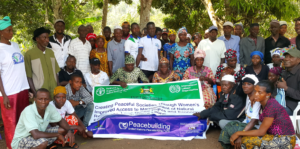A research to investigate water availability, source, and management in nine communities in the Western Area Peninsular Forest commissioned by the WAPFoR project was successfully carried out. The study used a number of tools and procedures including; structured questionnaire, focus group discussion, laboratory analysis, stream channel measurement, stream velocity and yield, as well as observations to accomplish the study. Data compiled from these sources were analysed to produce this report and the main findings, conclusion and recommendations are enumerated below.
The study shows that there is enough water within the nine communities that would support their water needs now and up to a projected time of 10 years. However, the caveat to this is that the pristine forest zone from where the streams originate as well as the stream channels must be protected always. The study also revealed that all but one (Sussex) communities depend on streams (surface water) for their domestic and agricultural water needs. Some communities have dual sources of water; water wells, spring boxes, and stream.
Most of the streams were discovered to have pH values within the WHO standard, some water sources have chemical components like iron (Fe) higher than the acceptable WHO standard. All of the water sources tested positive with bacterial contamination (E. coli, Faecal coliforms, non-Faecal coliforms) due to human activities close to the water ways or point sources.
Community members are willing to pay in kind and money for safe water and have suggested water management committees replacing village heads for their communities the study revealed.
While the report has a number of conclusions based on the assignment, the main conclusion for this summary is that there is ample water in all of the communities in the study. Most of the communities rely on streams and or springs for their water source and all of them have been found contaminated with bacteria, even though all the streams have chemical and physical properties in conformity with WHO standard. The water sources are ideal in terms of quantity and physical and chemical content but will have to be treated for bacteria if they are to be used as safe water by the communities.
Damming may not be appropriate in all of the cases. However, trapping the source water into bowl like structures or just laying pipes of various dimensions in the water can appropriately make water available for other processes like lift pumping, treatment, and other collection and storage means. To avoid human traffic to source water, water distribution system must consider facilities taking water into homes. Where this is impossible multiple standpipes in communities will adequately provide the necessary water demand.
Based on the findings and conclusion, the study recommends that safe water in appropriate water infrastructure is made available to all communities in this study. Community members should be involved after training in the treatment and management of their water sources.
Green Scenery 2011




